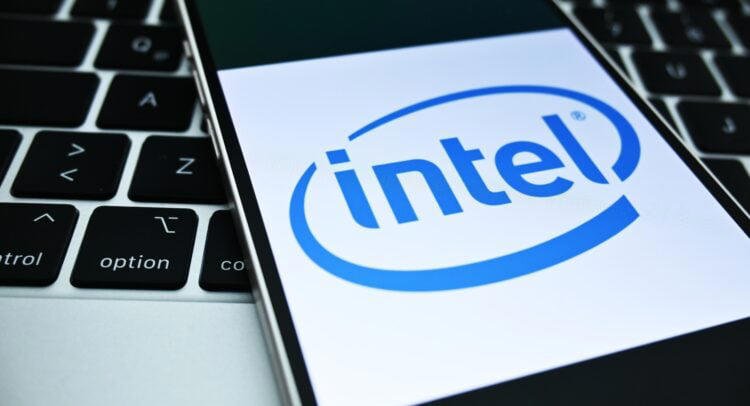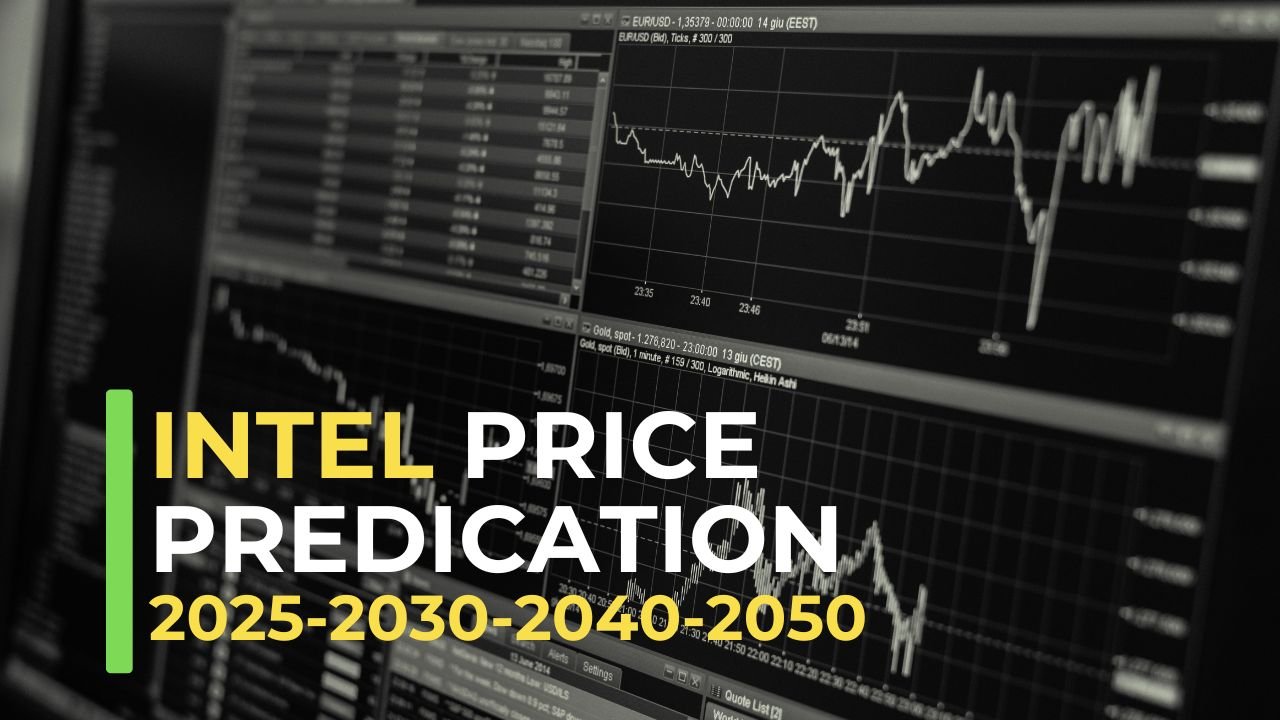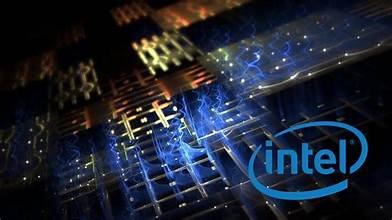Table of Contents

A Deep Dive Into Intel Stock:
Intel Stock Corporation. Intel Stock Corporation has been synonymous for decades with the heart of computing. Intel’s iconic “Intel Inside”, which echoed in homes, cemented the company’s presence not only in our devices but also in our collective consciousness. Intel, a giant of the semiconductor market, dominated the central processing unit (CPU) market for many years. The tech landscape is constantly changing, and dominance in the past is not a guarantee of success.
Investors who are considering Intel (INTC), today, face a complicated picture. The company is facing a difficult turnaround, fighting fierce competition and trying to catch up on key growth areas. Is the chip giant losing its edge or is it on the brink of a comeback as a sleeping titan? This comprehensive analysis will examine Intel’s stock, the factors that drive its valuation, as well as its current financial status and future prospects, to give potential investors a more accurate picture.
Intel Stock Performance Over the Years
Intel’s stock price history is one of rapid rises and difficult slumps that mirror the booms-and-busts in the tech industry. This blog is related to financeinfo.com.
Golden Era:
Intel Stock was founded in 1968 and went public in 1971. The company’s early years saw steady growth but it really took off during the PC revolution in the 1980s/90s. The company’s partnership with Microsoft (often referred to as “Wintel”) created a duopoly which dominated the personal computer market. Its stock price soared in the 1990s as a result of this dominance, and Intel became a leading performer during the dot-com era. Intel’s stock reached its highest level in August 2000. Its market capitalization exceeded $500 billion.
Post-Bubble Hangover:
As with most tech stocks, the bursting of dot-com was a major blow to Intel. Stock prices plummeted and took years to recover. The company was still highly profitable, and it was a leader on the PC and Server markets. However, new challenges started to appear. Intel was caught off-guard by the rise of mobile computing spearheaded primarily by smartphones and tablet computers. Intel struggled to enter the mobile chip market which was dominated by ARM designs produced by competitors such as TSMC, Samsung and Apple, as well by chips designed by Qualcomm and Apple. Lost Decades and Recent Struggles – Intel’s 2010s were a challenging decade.
The loss of manufacturing leadership was a serious blow. AMD and other competitors began producing CPUs using TSMC’s advanced manufacturing. They were able to compete, and in some cases outperform, Intel’s offerings on performance as well as efficiency. Apple’s historic decision to replace Intel processors with its custom-designed M series chips in its Mac lineup was a significant financial and symbolic blow. Intel’s stock, as a result of this, has underperformed both the broader semiconductor (SOX) index and A-list competitors such as NVIDIA and AMD in the last few years.

Intel Stock Price: Key Influencers
Intel stock is not just about the company. It’s also about the industry as a whole and its internal operations.
Intel’s stock is likely to be affected by Intel’s competition.
AMD’s CEO Lisa Su has led AMD to a remarkable return, gaining market share over Intel both in the lucrative server and consumer PC markets. The company’s Ryzen and EPYC chips have been praised for their value and performance.
NVIDIA NVIDIA, NVIDIA, NVIDIA, NVIDIA has become a major player in the datacenter, especially with the growth of AI. The CUDA platform is the industry standard in AI development. It is now expanding its reach to include data center CPUs, such as Grace, and advanced networking solutions.
Competitors based on ARM: Apple’s move to its own silicon highlights an underlying trend. Amazon (with Graviton processors), and other cloud giants, are developing their own ARM based chips to optimize cost and performance. This is a move that will chip away at Intel’s server dominance. The world’s top foundries (TSMC & Samsung). Intel’s main competitors as a manufacturer are the leading foundries in the world. TSMC’s technological lead is a major reason for Intel’s problems, because it allows Intel’s “fabless”, or rival, companies (like AMD and NVIDIA), to produce better chips.
Intel’s future depends on its ability execute its technology roadmap.
The company, under CEO Pat Gel singer has an ambitious plan that aims to deliver five nodes of manufacturing in four years. This will allow the company to regain process leadership by 2025. Stock performance will be heavily influenced by the success or failures of new nodes such as Intel 20A and 18A. The market will punish any delays or stumbles, but a successful execution can lead to a significant increase in the stock price.
Macroeconomic trends and market cycles:
The semiconductor industry has a notoriously cyclical nature. The demand for PCs and smartphones can vary depending on the state of the global economic climate. Intel’s revenues are affected by economic downturns when consumer and business spending on technology is reduced. In contrast, economic booms and significant technological shifts can lead to massive demand.
Artificial Intelligence is the fastest growing trend in today’s technology.
NVIDIA’s GPUs have dominated the AI-training market, but AI inference, or the process of running models that are already trained, happens on a wide range of hardware including CPUs. Intel is positioning its Xeon CPUs and new AI Accelerators (Gaudi), to take advantage of this huge market. Intel’s ability to capture an important share of the AI Hardware Budget is critical for its long-term success.

Intel Stock’s Financial Health
Intel is a huge company with significant financial resources. The financial statements of Intel provide a better picture of the company’s current position. Revenue Intel has seen its revenue under pressure. Recent quarters have seen significant revenue drops due to the decline in the PC market following pandemics and losses of market share. The company generates annual sales of tens billions of US dollars.
The Client Computing Group (CCG-PCs) and Data Center and AI group are two key segments. DCAI growth is crucial to offset a slower-growing PC market.
Profit Margin: Intel has historically enjoyed high gross and operational margins due to its dominance in the market and scale of manufacturing. In recent years, these margins have been compressed due to increased competitiveness, higher R&D expenses, and massive capital expenditures for the turnaround strategy. Management’s long-term objective is to restore margins back to their former glory.
Quarterly Earnings Reports – Intel quarterly earnings reports have a high level of scrutiny. Future Perspectives for INTC
Intel’s Future is a Tale of Two Potential Outcomes
The bull case: Advocates believe Intel is a undervalued turnaround. Pat Gelsinger, the CEO of Intel, is an engineer who has a strong vision. If the company is able to successfully implement its technology roadmap, and regain manufacturing leadership it can begin to reclaim market share. Massive investments in new fabs will be supported by government incentives such as the CHIPS Act (in the US) and similar programs in Europe.
The Bear Case – Skeptics say the road ahead will be too difficult. The competition is fiercer now than ever before, and firms like TSMC have a huge head start. Intel’s turnaround strategy is expensive and fraught execution risk. Intel has a long history of delays in its roadmap, and it’s not certain that this time will be any different. The foundry industry is notoriously hard to enter, since it requires a lot of trust and ecosystems from customers, many of whom are direct competitors.

FAQs
1 Does Intel stock make sense to buy now?
It depends on your investment time frame and risk tolerance. Intel’s current valuation may be attractive to long-term investors who believe in the turnaround story of Western semiconductor manufacturing and its strategic importance. If you’re looking for quick gains or are risk averse, Intel’s stock volatility and uncertainty may deter you.
2 What is the greatest risk of investing in Intel?
Execution failure is the biggest risk. Intel’s comeback depends on the company’s ability to meet its ambitious production roadmap on schedule. The stock could suffer if there are any significant delays in the upcoming nodes or if they have quality problems.
3 Does Intel pay a dividend?
Intel has paid dividends for many years. In early 2023 the company reduced its dividend to save cash for massive capital investments. The company still pays dividends, but the yield is lower than in previous years. The success of the turnaround plan will determine future dividend growth.
4 What is the difference between NVIDIA, AMD and Intel?
Intel, NVIDIA and AMD are frequently grouped together, but they have separate primary businesses. Intel is an Integrated Device Manufacturer that designs and manufactures its chips. Its main focus is CPUs. AMD is a “fabless designer” of CPUs and graphics cards that relies on foundries such as TSMC. NVIDIA, a fabless firm that dominates GPU computing (now the core of AI), is also a dominant fabless company. Both AMD and NVIDIA had better stock and growth performance in recent years than Intel, due to their technological lead and focus on fast-growing markets.
5 What role does Intel Foundry Services play?
IFS is Intel’s new business unit that manufactures chips for other companies. This is a pivotal strategic move to directly compete with TSMC, Samsung and other foundries in the market. Intel wants to use its manufacturing and R&D capabilities to create a new revenue stream, and to better utilize expensive factories. The company’s strategy is built on its success.
Conclusion
Investing today in Intel is to bet on the most ambitious, expensive and successful turnaround in corporate history. Intel is no longer undisputed king in silicon but is still far from being defeated. The company has a wealth of intellectual property and a large manufacturing capacity. It also enjoys strong government support in its efforts to bring back domestic chip production.
